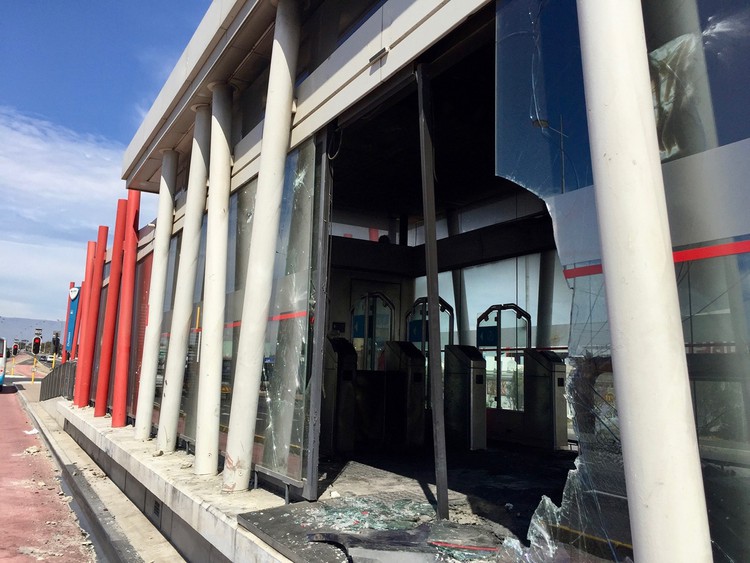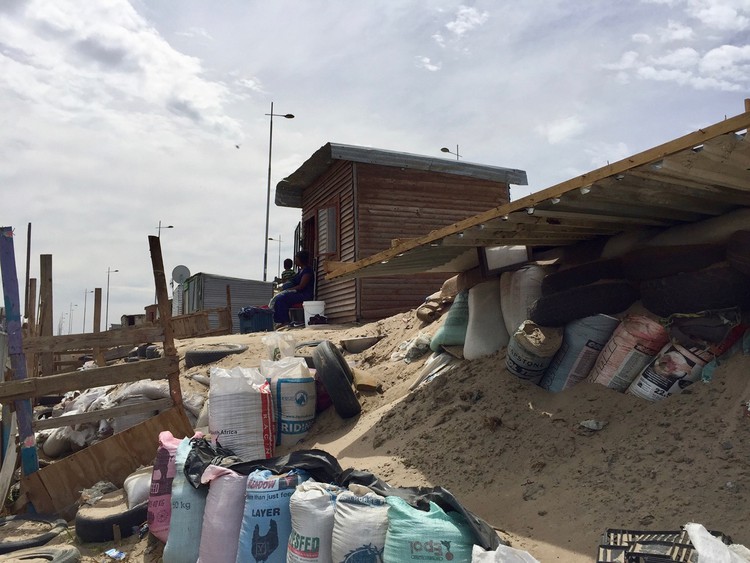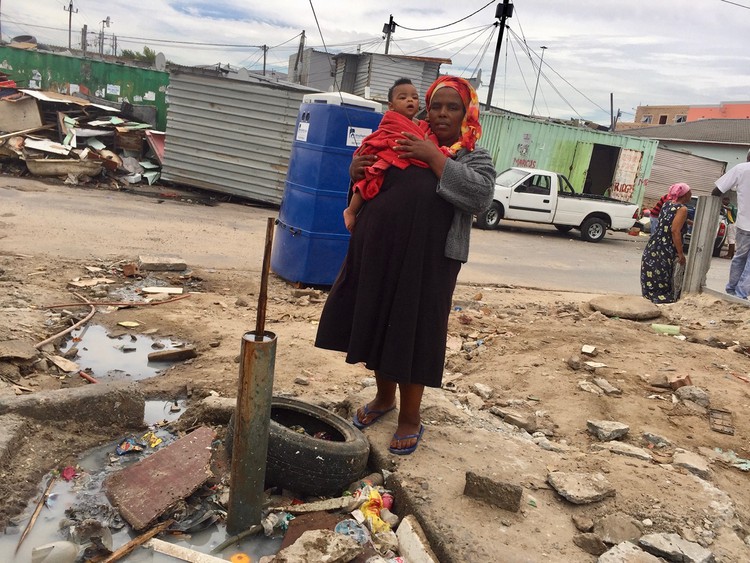Why Dunoon has erupted
Roads have been blockaded and MyCiTi bus stations destroyed
Since last weekend there have been sporadic protests in Dunoon. Disgruntled residents attacked MyCiTi bus stations, stoned a Golden Arrow bus, pushed shipping containers onto Usasadza Street, and blockaded Potsdam Road and the N7 with rubble and burning tyres.
There appear to be three groups of angry residents.
Siyahlala protest
Protesters who torched the Usasadza MyCiTi bus station live in grim conditions on land owned by Transnet Freight Rail in Siyahlala informal settlement.
Negotiations between the City of Cape Town and Transnet Freight Rail stretch back to 2007. They have attempted to find an amicable solution to relocate the residents.
In 2013, Transnet approached the Western Cape High Court seeking eviction orders against the shack dwellers. Instead, the court committed the main applicant, Transnet, and the City to a mediation process with the community. Five years later, Transnet has started constructing a security wall to secure its rail reserve. Some people’s shacks are located metres away from the active railway line and will be inside the security wall. These shacks have been marked for demolition. These are the residents, who facing homelessness, took to the streets on 10 February and nearly destroyed the MyCiTi bus station near Dunoon taxi rank with bricks, stones, and burning tyres.
Residents agreed to speak to GroundUp, but only anonymously. They said about 300 families were backyarders in Dunoon’s RDP houses but they could no longer afford to pay rent. In 2015, they decided to squeeze their shacks near to the railway line at the back of the informal settlement.
Under the mediation process between Transnet and the City, shacks that were built after the mediation started in 2013, are not included in the relocation plans. Community leaders accused the 300 families of stalling Transnet’s security wall construction and delaying the relocation plans.
“They told us to leave, without alternative accommodation, because Transnet wants to continue constructing the wall,” said a resident,
They said torching the MyCiTi bus station was done to attract the attention of the City to their plight.

Transnet Freight Rail spokesperson Mike Asefovitz said, “The process is currently under the supervision of a judge, who has been mandated to oversee the entire process until completion.”
He said Transnet has a responsibility to safeguard against any safety risk which might be linked to its operations, which is why it is constructing the security wall.
“Shacks and structures erected using ballast stones from the railway tracks increase the risk of derailment of trains that traverse the line in Dunoon,” he said.
He said the City, Transnet and community leaders were close to concluding an agreement to relocate homes out of the danger zone to another area known as the Sand Dune, which will be flattened for settlement.
Xanthea Limberg, the mayoral committee member responsible for informal settlements, said only structures that fall within the area where the wall is to be constructed will be relocated by Transnet. Limberg said the mediation process is still underway.
“Transnet is responsible for the whole upgrade process. The City will install further services along the access road and along the wall. The City will issue the persons to be relocated with housing kits and provide shared services at the relocation site,” said Limberg.
Brett Herron, the mayoral committee member responsible for transport, said thousands of commuters from Dunoon will be inconvenienced for months because of the “senseless” damage done to the MyCiTi stations at Usasadza and Dunoon. The two stations serve two of the most popular and busy trunk routes.

Usasadza protest
On 12 February, demonstrators, mostly women, pushed two shipping containers onto Usasadza Street in protest over a lack of toilets. Hundreds of families from three informal settlements along Usasadza Street – Marcus Garvey, Robben Island and West Beach 3 – share just eight bucket toilets. Residents have to cross Usasadza Street to get to the toilets.
Xoliswa Mbetheni, a community leader in West Beach 3, said people have to queue to use the toilet. At night, residents relieve themselves in plastic bags and buckets. They then empty these in stormwater drains and rinse their buckets at a communal standpipe the next day.
“Raw faeces, urine, blood soaked sanitary pads [are emptied] at the drains and onto the communal standpipe,” said Mbetheni.
She said the efforts to get more toilets had failed; they were told there was no space. The protesters said they pushed the three containers onto Usasadza Road to make space for the installation of more toilets.
Limberg said Dunoon suffers from particularly high densities and a lack of available space for the installation of new taps and flush toilets – “a constant challenge”.
“Portable flush toilets have been offered to the community. However to date this offer has not been accepted,” she said. “These toilets can be kept in the home, and store waste in a sealed container which is serviced three times a week (or upon agreement with the community) by the City’s contractor.”
She said an investigation and feasibility study to determine whether it is possible to provide toilets in the area where the containers had been would be done. “Availability of existing connection points to the water and sewerage network also needs to be taken into consideration,” she said.

Potsdam Road protest
A new informal settlement has been established along Potsdam Road near Killarney, where there are now about 20 shacks. It is not far from Transnet Freight Railway line. There have been sporadic protests and running battles with the City’s Anti Land Invasion Unit (ALIU) and law enforcement. Shacks have been demolished only to be rebuilt.
The shack dwellers say they were kicked out of the backyards of RDP houses in Dunoon after the houses were sold to entrepreneurs who then upgraded and extend them, adding on rooms to rent out for R1,800 to R2,000 per month.
Limberg said the land is owned by the City, but said the City “cannot allow land to be invaded for various reasons, including: the land is unsuitable for habitation; the land is earmarked for development; there is underground infrastructure, access to which would be compromised if the land is invaded.”
She was not specific as to which of these applied to the Potsdam settlement.

Support independent journalism
Donate using Payfast

Don't miss out on the latest news
We respect your privacy, and promise we won't spam you.
© 2018 GroundUp. 
This article is licensed under a Creative Commons Attribution-NoDerivatives 4.0 International License.
You may republish this article, so long as you credit the authors and GroundUp, and do not change the text. Please include a link back to the original article.

